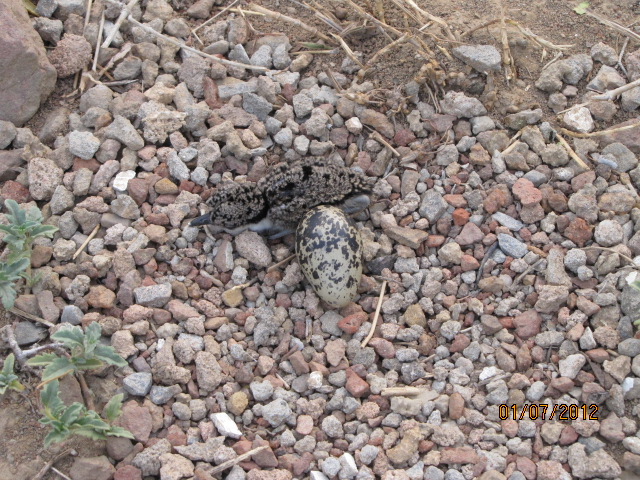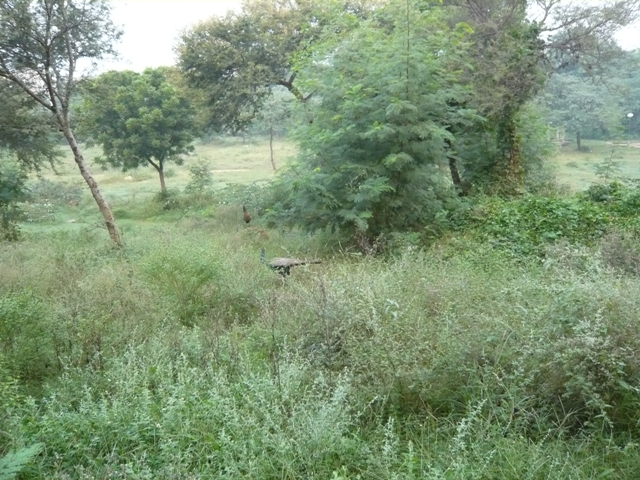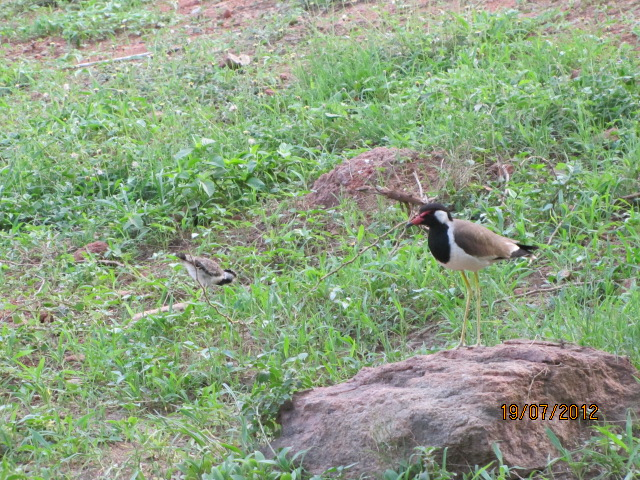LESSON IN PROCREATION – from a bird | -T. Kaithang
Photo: Newly hatched, looking helpless and vulnerable. The other egg did not yield any baby.
In the course of my morning walk, I come across several varieties of birds both in the colonies and the parks adjoining our colony in South Delhi. The peacocks and pea-hens, lumbering about or flying in the parks in their graceful manner, the myna, the occasional hoopoe, the pied cuckoo, the red-vented bulbul, the Asian Koel, the visiting parakeet, the jungle babbler(?) and a few smaller birds. We also get to see a family of monkeys descending from the trees, walking along the footpaths in a nonchalant manner. There are of pigeons monopolising the bird feeds left thoughtfully by bird-lovers earlier in the morning. Of course, the crafty crow is never far behind when there are pickings to be had. Nature seems to say “Live and Let Live” as the Creator would have intended in the Garden of Eden.

Photo: Inside the park
Among the birds that come to the parks are the red-wattled lapwing. The bird has thin long legs, sharp, long beak. It has a piercing cry, shrill and noisy, runs about, stops, runs again as it picks up food(insects, molluscs, grubs). This bird usually comes in pairs, sometimes threesome, and occasionally alone. I have been observing this bird from time to time. What strikes me is its choice of nesting spot. Spring, perhaps, is the season when birds turn amorous. During this season, the bird is usually spotted in pairs. The last Spring season also brought along the bird in pairs. I could make out that the pair was trying to settle down. I had seen them, rather some of the species, going through the same exercise in the earlier years.
The month of May came as it is wont to do, with the sun a blazing ball of fire, sizzling and burning hot on all in Delhi especially. It was this hot two years back and many years earlier too. In this unbearably hot sunshine, I had seen a pair of lapwing birds choosing an open area, not even under the shade of tree, for building their nest. Mention a bird’s nest, and one will think of a soft, cozy looking typical nest. No, this lapwing bird is of much sterner stuff. Its nest consisted of rough cut stones and pebbles and some loose soil. On this, the bird laid her eggs- three in all. Then she started sitting on them day in and day out, come rain or sunshine, though it was mostly the blazing, hot sunshine. The other lapwing bird would look for food close by, while keeping an eye on the nest, ready to do his bit to ward of any danger or threat. And this was the scene being played out every day as far as I could see.
And when days passed into weeks, my admiration for the patience, devotion, dedication and their sheer stamina for these birds grew. How did the bird select such an open place on the open ground, under the hottest summer month, to lay its eggs and hatch them? Besides the hot season, which is always a good reason to make us folks scurry for the shade and the cooler-cooled room at home, the open, exposed ground, the apparent defencelessness against many predators, the number of days the bird may have to forego its food, etc., all added up to my admiration so much so that if I saw any dog heading toward the nest, I was also ready to pick up some stones to lob at the dog. Of course, I never really needed to do that because the vigilant sentry bird would rise in the air to dive back at the dog in such a fierce assault that the dog was discouraged to proceed further. Sometimes, the two birds would join to fend off such lurking dangers. I saw all these repeated with other potential dangers in the course of my visit to the park.
After more than a month of exposure to the sun, I noticed, one day, that the bird no longer sat in the nest. Instead, she was feeding herself nearby. On closer observation, I saw there were two baby birds nearby. These were the babies that had hatched from the eggs. In course of time, the babies grew, and one fine day, the entire family was no more to be seen. This was 2011.
In 2012, I again saw the process repeated at a slightly different location inside the park with the same elements and the risks. This time, only one baby was hatched out of 2 eggs. This baby also grew and, after some time, disappeared with the adult birds. 
Photo: Learning the skills of life- the baby bird under its mother’s supervision
In the 2013 season, I again saw the birds going through the same kind of torment and hazards under the punishing heat. I even went and took photograph of the two eggs when the mother bird was momentarily away from the nest. After days of agonising wait, no baby bird was hatched. When I visited again after 3 days absence, I saw that the eggs were gone, the nest had been abandoned and realised that the birds had aborted their plan. Perhaps something happened, some animal ate up the eggs, or anything.
In childhood, I was involved in hunting birds, sometimes even picking the eggs, or taking the baby birds home or even killing the adult birds, never realising how tough and painful the whole procreation process is.
Now that I know how the adult birds must have suffered to give birth to their next generation, I would definitely restrain myself, or advise the children how difficult it is to produce even one life and, therefore, and be more considerate when dealing with any life – including a bird’s life.
